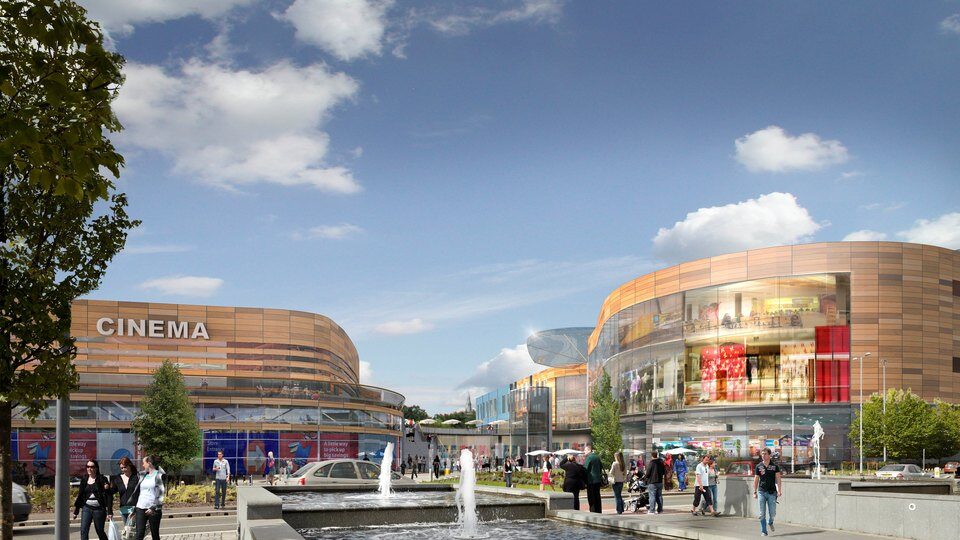Here’s what’s next for regeneration in Newport, South Wales — a forward‑looking snapshot based on the latest council plans, ongoing developments, and community momentum:
Underway & Launching Soon
- New Leisure & Wellbeing Centre (opens 2026)
A £19.7 m riverfront facility powered entirely by renewable electricity — complete with a leisure pool (including slides and lazy river), teaching pool, café, fitness studios, and community spaces. Construction has begun under contractor Wynne Construction. - Glân Llyn at Llanwern Steelworks
The massive brownfield redevelopment includes up to 4,000 homes, schools, a business park already home to Amazon, and a planned railway station. - Ringland Regeneration Scheme
A £47 m multi-phase project delivering 158 new homes and relocating the local shopping centre; completion expected by late 2028. - Station & Bus Interchange Upgrades (2025–2026)
Transforming Newport railway station into a fully integrated transport interchange and reconfiguring Old Green Roundabout to include dedicated bus lanes and better active‑travel (walking, cycling) routes.
📍 City Centre Placemaking Plan (2025–2040)
In July 2025, Newport City Council approved a 15-year City Centre Placemaking Plan, structured in short-, medium-, and long-term phases
Short-term (next 18 months – 2 years)
- Street food markets along the riverfront (Steel Wave)
- Licensed busking stages across the city centre
- New children’s playground, improved lighting, public realm enhancements
Medium-term (2–7 years)
- Leasing the former Debenhams and Cineworld units in Friars Walk for leisure/ticketed/tourism use
- Opening of the riverfront new leisure centre
- New Coleg Gwent (further education) campus on the former Newport Centre site
- Enhanced activation of the River Usk waterside, improvements to Rodney Parade area (“Cabbage Patch”)
- Reuse or refurbishment of Westgate Hotel building
Long-term (7+ years)
- Regeneration at the southern end of Commercial Street: demolition of derelict buildings, creation of a new public park, reopening the historic Great Central Hall
🌆 Broader City Renewal & Policy Efforts
- Vacant Property Enforcement & Refurbishment
Targeted efforts are underway to bring empty or derelict buildings (e.g. in Charles Street, Upper Dock Street, Maindee) back into use through enforcement and owner engagement. - City Centre Revitalisation & Independent Businesses
In 2024 footfall rose significantly, and city leaders highlight growth of independent retailers and leisure businesses (e.g. at Kingsway, Market Arcade, The Underground). Council incentives and partnerships (e.g. with Newport Now BID) are active - Active Travel Investments
Projects like the 24/7 bike‑storage facility on Skinner Street have encouraged take-up of cycling, supported by road safety measures (e.g. expanded 20 mph zones). Despite progress, walking and cycling uptake remains slow, with further work needed.
🎨 Cultural & Community Programming
- Newport Music Trail & Festival of Words
First hosted in March 2025, these events reflect Newport’s growing cultural renaissance, with city planners aiming to establish them as annual fixtures alongside the popular Food Festival. - Transporter Bridge Visitor Centre
A refurbished centre at this iconic heritage site is due to open in 2025, enhancing tourism appeal and heritage interpretation
Summary Roadmap
| Timeframe | Key Priorities |
|---|---|
| 2025–2026 | Leisure centre completion; short-term placemaking deliverables; station interchange construction; initial street programming |
| 2026–2030 | Glân Llyn build-out continues; Ringland housing delivery; new Further Education campus opens; riverfront activation |
| 2030–2040 | Major city‑core redevelopment; new public park; historic building reuse; deeper retail‑leisure transition |
🧭 Final Thoughts
The next chapter of Newport’s regeneration is a bold blend of physical infrastructure, social programming, and placemaking driven by community input. From Net Zero leisure facilities to flexible reuse of former retail spaces, the vision shifts away from traditional high streets toward experience-driven community hubs. With early signs of rising footfall, independent vitality, and new housing, the Placemaking Plan sets out a realistic but ambitious path to 2040 – a roadmap built on short-term impact and long-term transformation.
Discover more from NewportUnlimited.co.uk
Subscribe to get the latest posts sent to your email.

